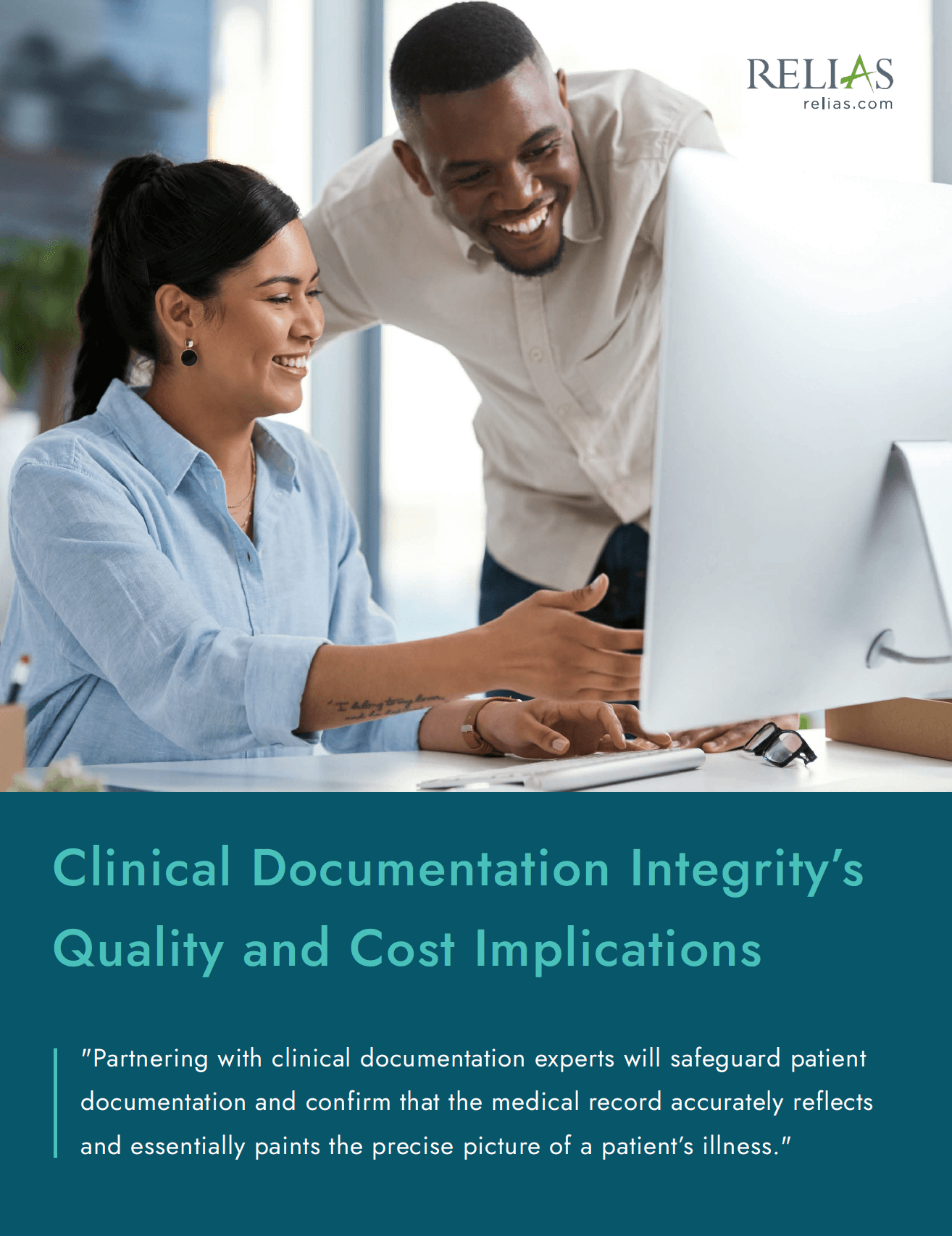Coding is high value — and in high demand. Coding and clinical documentation have never been more important in healthcare. “We are seeing sign-on bonuses. The best coders can pretty much pick their jobs,” reported Sue Bowman, RHIA, CCS, MJ, FAHIMA, Senior Director of Coding Policy and Compliance for the American Health Information Management Association.
At the same time, many experienced coders are retiring, which leaves a younger, less-skilled workforce — and 7% of current coders will reach retirement age within the next 10 years.
“We rely heavily on our coding quality team to onboard new coders and get them up to speed on our quality standards,” said Jake Hess, Senior Director of Revenue Cycle Shared Services at Spectrum Health. Coding departments are understaffed and facing shorter timeframes. “I’m hearing about very high productivity standards due to staffing shortages,” said Bowman.
Yet coding mistakes can mean lost revenue, or worse — fines, compliance, and legal issues. You’ll need ongoing training for your staff to improve your clinical documentation and avoid the following coding disasters.
Undercoded Complex Hospital Admissions
Coders are challenged to select the codes that best convey the reason for admission. With more conditions being managed on the outpatient side, admitted patients might have multiple comorbidities and complications. “That has shifted what undercoding even is. You can have 30 codes and still be undercoding nowadays because there are so many things to pick up,” said Bowman.
With the shift to value-based care and risk adjustment models, there’s a need for coding that gives a complete clinical picture of the patient. “Coders are having difficulty coding all of the aspects of the admission that they really should,” said Bowman.
As coders prioritize codes that impact reimbursement, important information could be lost. “In the long run, we need a good understanding of exactly what conditions and risk factors and other aspects are affecting hospitalizations and patient care outcomes,” explained Bowman. Codes convey the severity of illness, mortality risk, and potential for adverse outcomes and readmission. “Otherwise, patients might not appear as sick as they really are,” said Bowman.
Coding data on the social determinants of health is also important. It doesn’t affect reimbursement — at least, not right now. “But it can reduce the facility costs and improve patient outcomes as more organizations look to connect patients to community resources to solve some of those issues,” said Bowman. Is your organization’s coding as complete as it could be?
Downcoding by Payers
At Sharp HealthCare, staff members were doing everything right — they used the correct codes, obtained authorizations, and scheduled services appropriately. The properly coded claims were paid — but at a lower amount.
After time-consuming phone calls, staff found out why: The health plans were downcoding the diagnosis-related group (DRG). “The documentation and coding are appropriate on our end. But health plans are using a scrubber with AI and downcoding it so they can underpay,” said Laurel C. Achenbach, Manager of Patient Financial Services.
Since the payment methodology is DRG-based according to the payer’s contract, recouping the lost revenue is challenging. “It was happening prior to COVID, but it is getting worse. It’s surfaced among a variety of the top health plans in the past year,” said Achenbach.
Revenue cycle leaders are pushing back against this practice. At monthly meetings with health plan representatives, said Achenbach, “This is at the top of the agenda. For lack of a better word, it’s a tactic. It’s an unfair business practice.” Your CDI team should be able to tell if this is happening to your organization.
Insufficient Clinical Documentation or Underreported codes
Coding is often not specific enough because clinical documentation is missing some details. For example, providers may document “complex wound repair” without enough explanation. “It takes more than the word to meet the definition of complex wound repair,” said Gerri Birg, Managing Director at Huron. The patient’s record must include an operative report with a complete clinical description within the documentation. Providers are trained to document from a clinical care standpoint. Coders are trained to document based on coding guidelines, governmental, or insurance standards. “This causes gaps in communication between the physician and the coder,” said Hess. Spectrum Health’s Clinical Documentation Integrity (CDI) team educates providers to bridge knowledge gaps.
“Clinicians should be aware of the nuances between code language and clinical language. Things aren’t always a 1-to-1 match,” said Jannifer Owens, revenue cycle content manager at 3M.
Overworked doctors are not always eager for questions from coders. Owens tells physicians: “Trust your coder. They were educated in the rules and regulations of coding. If you don’t understand why they’re asking questions, then get clarification.”
“When additional procedures are performed during a face-to-face visit, providers often lack documentation to support the procedure code,” said Birg. Prolonged services and advanced care planning are often missed, for example. Your clinical staff and CDI team should work together to ensure consistently complete documentation.
Fraudulent Coding or Overreporting
“We need to appropriately report the correct service that was rendered. If we do not have all the information from the provider, we are unable to do so,” said Hess.
The Department of Justice and the U.S. Department of Health and Human Services’ Office of Inspector General are cracking down on improper coding. One health system settled a False Claims Act case for $90 million for knowingly submitting inaccurate diagnosis codes. Another case alleged that a health system defrauded the Centers for Medicare and Medicaid Services of $1 billion because doctors were pressured to add diagnosis codes to medical records that were nonexistent or unrelated to the visit.
If codes are overreported, “This can potentially result in additional audits, in addition to fraud charges,” warned Owens. Your staff must have expertise in coding as well as a solid foundation in ethics, process, and protocol.
Scrubbing Deficiencies
As a senior industry advisor with MGMA, Veronica Bradley, CPC, CPMA, recently audited medical coding at outpatient clinics. The audit looked at outpatient evaluation and management (E/M) codes and in-office procedural coding and diagnoses codes using ICD-10-CM.
“The revelation from the audits was alarming,” said Bradley. Many providers were noncompliant with 2021 E/M coding documentation guidelines. Bradley also analyzed providers with high volumes of denials. Unbundling of CPT codes (due to a lack of claim scrubber or inappropriate use of modifiers) was a common problem. “It is important for medical coders and billers to scrub a claim and check the National Correct Coding Initiative edits to prevent improper payment,” said Bradley.
Above all, it’s vital to educate your staff on accurate medical coding. “Preventing coding issues becomes a matter of education and updating medical codes consistently,” said Bradley. Coding is a dynamic and critical skill set that requires staff members to be as up to date in their training as possible.
Revenue Cycle Management and Clinical Documentation Integrity
Relias offers solutions for the entire revenue cycle, including comprehensive education on optimal staff performance and retention, documentation quality, cleaner claim submissions, reduced denials, and accurate reimbursements.
Read the white paper below and see our infographic, Coding pitfalls: Are they sinking your revenue?

Clinical Documentation Integrity’s Quality and Cost Implications
A lack of continuing education for your staff could be putting both your patients and your bottom line at risk. Training is crucial for keeping your staff current on the payer, coding, regulatory, and legislative requirements of the revenue cycle. Find out how clinical documentation integrity affects both quality and cost, impacting the overall health of your organization.
DOWNLOAD WHITE PAPER →






